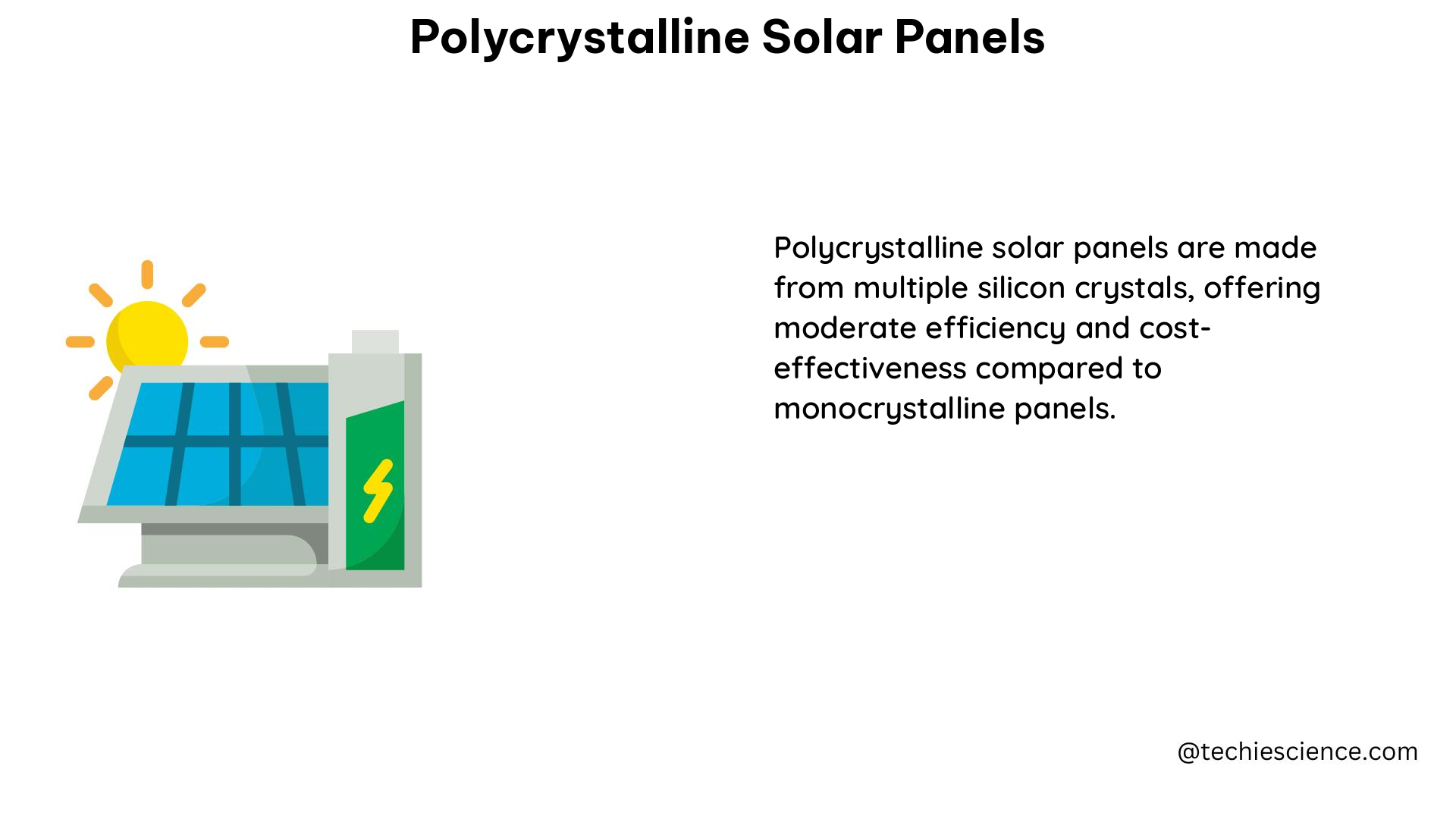Polycrystalline solar panels, also known as multicrystalline solar panels, are a popular choice for residential and commercial solar power systems. These panels are made from silicon crystals that are melted and cooled to form multiple crystal structures, resulting in a distinctive blue or black appearance.
Understanding the Technical Specifications of Polycrystalline Solar Panels
Polycrystalline solar panels have a slightly lower efficiency compared to their monocrystalline counterparts, typically ranging from 14% to 16%. In contrast, monocrystalline panels can achieve efficiencies up to 22%. However, polycrystalline panels are generally less expensive to manufacture, making them a more cost-effective option for many solar power projects.
When measuring the power output of a polycrystalline solar panel, there are several key factors to consider:
-
Open-Circuit Voltage (Voc): This is the maximum voltage that the panel can produce when it is not connected to a load. For a typical polycrystalline solar panel, the Voc can range from 22 to 24 volts.
-
Short-Circuit Current (Isc): This is the maximum current that the panel can produce when it is short-circuited. The Isc for a polycrystalline solar panel can range from 5 to 8 amperes, depending on the panel size and design.
-
Power Output (P): The power output of a solar panel is typically measured in watts (W) and can be calculated by multiplying the Voc and Isc values. For example, a polycrystalline solar panel with a Voc of 22.4 volts and an Isc of 5.62 amperes would have a maximum power output of 125.728 watts (22.4 x 5.62 = 125.728 W).
Installing and Maintaining Polycrystalline Solar Panels

When it comes to installing and maintaining polycrystalline solar panels, there are a few key considerations to keep in mind:
Orientation and Tilt
The orientation and tilt of the panels can significantly affect their power output. The panels should be installed at an angle that is optimized for the latitude and climate of the location, and they should be oriented towards the sun’s path to maximize energy generation.
Cleaning and Maintenance
Dust, dirt, and other debris can accumulate on the surface of the panels, reducing their power output. Regular cleaning and maintenance are essential to ensure that the panels are operating at their maximum efficiency. This can be done by gently wiping the panels with a soft cloth or using a mild detergent and water solution.
Environmental Impact of Polycrystalline Solar Panels
Polycrystalline solar panels have a lower carbon footprint than traditional fossil fuel energy sources. However, the manufacturing process does produce some greenhouse gas emissions. According to a study, the carbon footprint of silicon manufacturing is around 6.0 kg CO2e/kg per silicon metal made.
Advantages and Disadvantages of Polycrystalline Solar Panels
Advantages:
- Cost-Effective: Polycrystalline solar panels are generally less expensive to manufacture than monocrystalline panels, making them a more affordable option for many solar power projects.
- Durability: Polycrystalline solar panels are known for their durability and can withstand harsh environmental conditions, such as extreme temperatures, wind, and hail.
- Lower Carbon Footprint: Compared to traditional fossil fuel energy sources, polycrystalline solar panels have a lower carbon footprint, contributing to a more sustainable energy future.
Disadvantages:
- Lower Efficiency: Polycrystalline solar panels have a slightly lower efficiency compared to monocrystalline panels, typically ranging from 14% to 16%.
- Appearance: The distinctive blue or black appearance of polycrystalline solar panels may not be as aesthetically pleasing as the uniform black appearance of monocrystalline panels.
- Sensitivity to Shading: Polycrystalline solar panels can be more sensitive to shading than monocrystalline panels, which can reduce their power output.
In conclusion, polycrystalline solar panels are a widely used and cost-effective technology for residential and commercial solar power systems. By understanding their technical specifications, installation and maintenance requirements, and environmental impact, you can make an informed decision when choosing the right solar panel technology for your needs.
References:
- Measuring the Power of a Solar Panel – Alternative Energy Tutorials
- Analysis of the power loss and quantification of the energy distribution in PV module
- Quantitative Analysis of Solar Photovoltaic Panel Performance with Size-Varied Dust Pollutants Deposition Using Different Machine Learning Approaches
- What Is the Carbon Footprint of Solar Panel Manufacturing?

The lambdageeks.com Core SME Team is a group of experienced subject matter experts from diverse scientific and technical fields including Physics, Chemistry, Technology,Electronics & Electrical Engineering, Automotive, Mechanical Engineering. Our team collaborates to create high-quality, well-researched articles on a wide range of science and technology topics for the lambdageeks.com website.
All Our Senior SME are having more than 7 Years of experience in the respective fields . They are either Working Industry Professionals or assocaited With different Universities. Refer Our Authors Page to get to know About our Core SMEs.